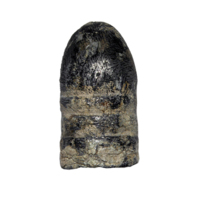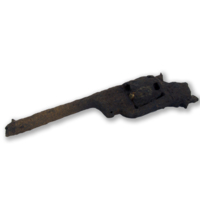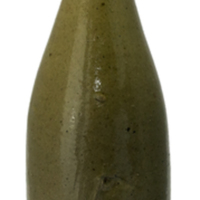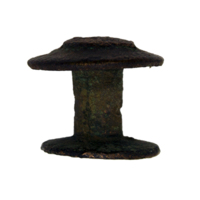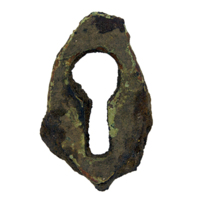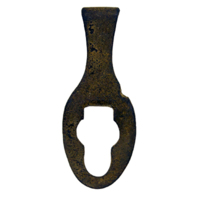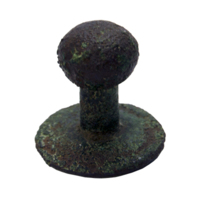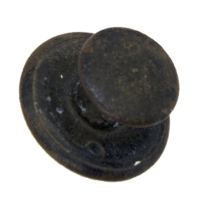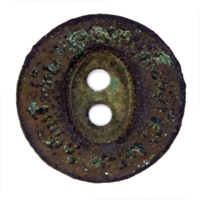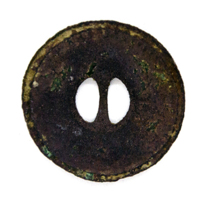Pack Tracks
Finding a track to Trinity Bay
The new town of Thornborough on the Hodgkinson goldfield was 280 kilometres by road from Cooktown and 210 kilometres from Cardwell. Wagons could take several months to make the journey and freight costs were exorbitant. The 2,000 miners on the field were anxious to find a shorter route to the coast.
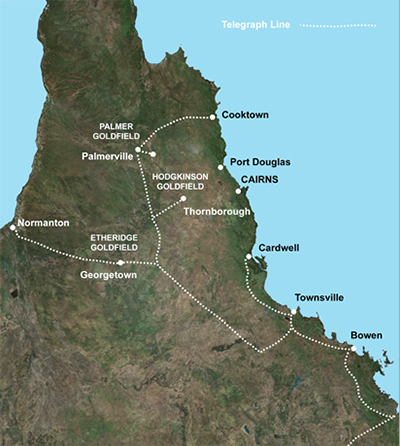
The telegraph network in north Queensland, 1877.
Smith’s Track
Bushmen Bill Smith, John Cardnow and John Doyle left Thornborough at the end of June 1876 and reached the top of Bunda Bunda:rra (Yirrganydji: 'the home of the cassowary / the Macalister Range).1 They could see the ocean, which Bill Smith recognized from his time as a Bêche-de-mer fisherman at Green Island, as Trinity Bay. The three men returned to Thornborough without reaching the coast.2 Their arrival back at the Hodgkinson occasioned considerable excitement in town and on 8 July 1876 an open-air meeting was held at Thornborough, chaired by Mining Warden Howard St. George and attended by several hundred enthusiastic miners.3 Doyle addressed the group and a committee was formed to petition the government for a road prospecting party and also to raise £100 to pay Smith to cut a track to a landing place at Trinity Inlet.
Smith and Doyle set out from Thornborough again and as they approached the coast, they experienced great difficulty in clearing through belts of tropical rainforest, which they referred to as ‘scrub’. Upon reaching the top of the Macalister Range they could see the ocean but could not find any way to get down on horseback, so they proceeded on foot, scrambling down the precipitous hillside holding on to vines and roots.4 They arrived at the foot of the range close to where Stoney Creek enters the Barron River. Smith and Doyle returned to Thornborough on 12 August 1876, where they reported to St. George that there was is a good road to within ten miles of the coast.5
At the end of August 1876, Smith left Thornborough and travelled to Cooktown, where he boarded the S.S. Lord Ashley and sailed to Trinity Bay. Smith’s party, consisting of himself, Charles Lipton, John Stevens (or John Stewart, or John Manly) and two Aboriginal men from Fraser Island, arrived at Trinity Inlet on 2 September 1876.6 Three days later they rowed up Smith’s Creek and camped at Smith’s Landing (this area became the suburb of Portsmith in Cairns in 1973).7 Smith’s party searched through the thick rainforest around the foot of the ranges for eleven days before finding an Aboriginal track at Stoney Creek which went up a spur to the top of Bunda Djarruy Gimbul (the Lamb Range).8
From there it took Smith’s party three days to walk to Thornborough and they arrived on 21 September 1876 to a hero’s welcome.9 Smith, his two companions and their two Aboriginal guides, were the ‘lions’ of the place for several days and the consumption of Jas. Hennessy cognac notably increased at Thornborough and Kingsborough.10 Although Smith joined in the celebrations, the exertions of this latest journey had been detrimental to his health and the diggers on the Hodgkinson noted that the trip had given the veteran prospector "a severe shaking”.11
Smith’s Track was reported to be first-rate, with the exception of a a section of thick scrub about two miles long, and a particularly steep section about 500 yards long.12 Smith asked Hodgkinson Mining Warden, William Matthew Mowbrai if he would go out and inspect the track without delay.13 Mowbray felt obliged to comply because he was under pressure from the diggers to open a track to the coast, but he wanted to wait a while because four days earlier he had despatched a government party from Thornborough under Sub-Inspector Douglas with instructions to find a track to the coast at Trinity Inlet.14 Mowbray postponed his departure for a few days, hoping to expecting to receive news from Douglas’ party before setting off to the coast along Smith’s Track.
Douglas’ Track
Sub-Inspector Alexander Douglas Douglas, William Williams, surveyor Frederick Horatio Warner, his brother Charles Warner, Constable McDermott and six troopers left Thornborough on 17 September 1876 and rode to Groves Creek near the top of the range, where they left their horses and continued on foot. They arrived at Trinity Inlet on 23 September 1876, having successfully negotiated the Lamb Range via an Aboriginal track.15 Douglas’ Track down the range was just a short distance to the north of Smith’s Track.
Cardwell harbor pilot Edward W. Brittain was instructed to sail the pilot cutter north from Cardwell to Trinity Bay to assist Douglas’ party. The cutter towed a police whaleboat crewed by Sub-Inspector Robert Arthur Johnstone, Sub-Inspector George Townsend, Corporal Mowbray and nine Aboriginal police troopers.16 They arrived at Trinity Inlet on 18 September 1876 and met Douglas five days later.
On 25 September 1876, Douglas, Johnstone, Townsend and Brittain set out from Trinity Inlet to cut a track to Thornborough. Johnstone recalled they started from Trinity Harbour early in the morning and cut a road north towards Mount Whitfield, which had been named by George Dalrymple in 1873. They encountered a small creek lined with mangroves, now called Saltwater Creek, and they had to build a makeshift log road in order to get the horses across.17 Saltwater Creek was the only point at which they were compelled to stop on account of boggy ground.
They continued, cutting a bridle track through any rainforest ‘scrub’ they encountered and after about five miles they reached a fine running freshwater creek which they named after Robert Rickards Davidson, one of four clerks working at the Brisbane police headquarters who was a gentleman respected and esteemed by one and all in the service.18 The name ‘Davidson’ did not last long however and travellers soon began calling it Freshwater Creek, as it was the first fresh water to be found on the road after leaving Trinity Inlet. Davidson Creek flowed into a river, 200 yards wide which the Yirrganydji people called Bana Bidagarra. The police inspectors named it ‘The Barron’, honouring Thomas Henry Bowman Barron, chief clerk of police in Brisbane.19
After cutting through a mile and a-quarter of ‘scrub’ they reached open forest country and then struck the Barron River again, the water of which at this point was beautifully fresh and 40 yards wide.20 They crossed to the northern bank at a place where the river flowed over granite pebbles and was only three feet deep, which made the crossing tolerably easy for horses and teams. A short distance further upstream they crossed back to the southern bank at the base of the spur Douglas’ party had walked down two days earlier. Here they found the tracks of someone shod with heavy hob-nailed boots which went up the river into a gorge.21 Douglas and Johnstone followed the tracks for some distance, but then they spotted another set of tracks returning downstream, and as they did not have time to follow them any further, they surmised that the man wearing the hob-nailed boot had gone into the gorge and been forced to return. The tracks had most likely been made a week earlier by Smith’s party searching for a track up the Lamb Range.22
That evening Douglas and Johnstone camped at the foot of the mountains and the next day, 26 September 1876, they began cutting a track ten-feet wide up through the dense jungle to the open forest at the top.23 They were pleased to find good water for pack-animals a third of the distance up the range and within three-quarters of a mile from the top, and the ascent was gradual with just three steep pinches which might prove difficult for wheeled vehicles to negotiate.24 They reached the summit of the Lamb Range in two miles, and estimated it to be 1,200 feet above sea level. Upon reaching their old camp at Groves Creek, Douglas sent two of the troopers on to Thornborough with the news, and then loaded the rest of the horses and headed back down to Trinity Inlet. Two days later, Douglas’ two troopers arrived in Thornborough with a report that a fine road had been found only 65 miles in length, and that Douglas was waiting at Trinity Inlet for the arrival of the Thornborough contingent.

Old Smithfield track overlooking Trinity Bay, 1890.
Sidney Richardson Collection, UQFL243, University of Queensland.
| Go to the next section ⇒ The Hodgkinson miners visit Trinity Bay. | |
 |
This webpage is an excerpt from the upcoming book Old Smithfield: Barron River township (1876-1879) by Dr Dave Phoenix. Find Out More Here |
Featured Artefacts from Old Smithfield:
-
1. William ‘Bill’ Smith (c.1826/1833, Hertfordshire–1877, Smithfield). John Doyle (c.1842, Goulburn–1932, Mareeba). He is buried at the Mareeba Pioneer Cemetery. There is some uncertainty about the date that Smith and Doyle left Thornborough, and various sources report it as being either 20 June, 26 June, or ‘before the 24th June’. Bunda Bundarra was named the Macalister Range by Dalrymple on 20 October 1873 after the Honorable Arthur MacAlister, Colonial Secretary and Premier of Queensland. The four mountains in the range, Mounts Garioch (653 m), Mar (760 m), Formartine (783 m) and Buchan (671 m), were named by Dalrymple after the four districts in his native Aberdeenshire in Scotland, see: Dalrymple, Narrative and Reports of the Queensland North East Coast Expedition, 1873 (Brisbane: James C. Beal, Government Printer, 1874), 18-19; Dorothy Jones, Trinity Phoenix: a History of Cairns, (Cairns: Cairns Post, 1976), 29. ↩
-
2. Telegraph (Brisbane), 25 July 1876: 3. ↩
-
3. Mining Warden Howard St George (1825, Ireland–1897, Brisbane). ↩
-
4. James Venture Mulligan, Brisbane Courier, 2 September 1876: 6. ↩
-
5. Howard St. George, telegram to the Under-Secretary for Works, Brisbane, dated 14 August 1876, 76.3819, WOR A167, Queensland State Archives. ↩
-
6. There are contradictory reports about whether it was John Stevens, John Stewart or John Manly who was part of Smith’s party. ↩
-
7. Portsmith was declared a suburb by Cairns City Council in 1973, see: Queensland Place Names Board, Reference Number 48848, Plan Number QPN1248, 1 September 1973. ↩
-
8. Bunda Djarruy Gimbul was named the Lamb Range after Edward William Lamb (1828–1910), Queensland’s Chief Commissioner of Crown Lands. ↩
-
9. Smith left Smith’s Creek/Smith’s Landing at Trinity Bay at 11.00 a.m. on 18 September 1876 and arrived at Thornborough at 3.00 p.m. on 21 September after a journey of 70 miles, see: Maryborough Chronicle, Wide Bay and Burnett Advertiser, 12 October 1876: 2. ↩
-
10. Port Denison Times, 14 October 1876, D2301, CHS. ↩
-
11. Darling Downs Gazette and General Advertiser (Toowoomba), 4 November 1876: 7. ↩
-
12. Port Denison Times, 14 October 1876, D2301, CHS. ↩
-
13. William Matthew Mowbray (1850, Brisbane–1898, Queensland), was appointed Mining Warden at Thornborough on 8 July 1876 and replaced Howard St George as Mining Warden on 1 September 1876. ↩
-
14. Port Denison Times, 14 October 1876, D2301, CHS. ↩
-
15. Chief Inspector Douglas, Brisbane Courier, 3 July 1905: 7. Sub-Inspector Alexander Douglas Douglas (1843, Channel Islands–1914, Portsmouth). Surveyor Frederick Horatio Warner (1842, Brisbane–1906, Brisbane), married Mary Annie Walker Malcom Hamilton and had eight children. ↩
-
16. Sub-Inspector Robert Arthur Johnstone (1843, Van Diemen's Land–1906, Toowong); Sub-Inspector George Robert Townsend (?–1886). George’s brother, Edwin J. Townsend was also a Sub-Inspector of Police and both men were dismissed from the force in 1881 for drinking. George was reprimanded for furious riding in the streets of Cairns in 1878, see: Jonathan Richards, ‘A Question of Necessity: The Native Police in Queensland’, PhD Thesis, Griffiths University (2005); Jonathan Richards, The Secret War: A True History of Queensland's Native Police (St Lucia: University of Queensland Press, 2008); Robert Arthur Johnstone, Spinifex and Wattle, Queenslander, 2 May 1903: 959. ↩
-
17. Robert Arthur Johnstone, Official report of a journey made by Sub-Inspector Johnstone from the coast of Trinity Bay to Thornborough in search of a road to the Hodgkinson goldfields, submitted to Police Commissioner David Seymour, published in Queenslander, 21 October 1876: 15. ↩
-
18. Johnstone, Queenslander, 9 May 1903: 24; Robert Rickards Davidson (1845, Brisbane–1899, Townsville). ↩
-
19. Thomas Henry Bowman Barron (c.1835–1882, England), Chief Clerk and Accountant in the Queensland Police Department, Brisbane (under Chief Commissioner Seymour). ↩
-
20. Johnstone, Queenslander, 21 October 1876: 15. ↩
-
21. Johnstone, Queenslander, 9 May 1903: 24. ↩
-
22. Glenville Pike, Cummins & Campbell’s Monthly Magazine (February 1956): 9 & 34, D2416, CHS. ↩
-
23. Ferro Caril (pseudonym), Telegraph (Brisbane), 13 October 1876: 3. ↩
-
24. Johnstone, Queenslander, 21 October 1876: 15. ↩


